SO! Amplifies: Immigrants Wake America Podcast and the Work of Engaged Digital Humanities


SO! Amplifies. . .a highly-curated, rolling mini-post series by which we editors hip you to cultural makers and organizations doing work we really really dig. You’re welcome!
—
Conceptualized at a time of rampant increase in anti-immigrant violence, Immigrants Wake America is a creative response to the growing bias and violence against immigrant women in the U.S., as seen in the Atlanta shootings, the rise in hate crimes since the onset of Covid-19, and the US-Mexico border crisis. We believe that storytelling allows us to find similarities and differences between ourselves and others, offering a humanizing counterpart to harmful media narratives. The podcast creates a living archive of stories not yet heard, serving as an audio intervention into how immigrant women’s (hi)stories are narrated and passed on.

Immigrants Wake America is a public humanities, community-engaged project of digital storytelling through podcasts, in partnership with the Tenement Museum in New York. It features storytellers who share their family stories about migration and the centrality of women in their life histories. These storytellers have submitted stories to the Tenement Museum’s digital archive Your Story, Our Story (YSOS),
Founded in 1988, the Tenement Museum, focuses on immigration and immigrants to “foster a society that embraces and values the role of immigration in the evolving American identity.” YSOS cofounded by Annie Polland and Kathryn Lloyd, is a digital archive that houses stories associated with immigration, migration, and cultural identity. Some of the storytellers are first generation immigrants, while others are descendants of immigrants, born and raised in the US; their great-grandparents or grandparents migrated to the US ages ago. Through YSOS, the Tenement Museum invites people across the country to share their stories in the online digital storytelling exhibit. Each story reveals one individual’s experience. Together, the stories help us see how the unique histories shape the nation, and the patterns that bind us together.

Through exploring and curating stories from Your Story Our Story, we facilitate conversations that supplement and expand it. This makes possible the conception of an archive that is both dynamic and collaborative. Such an archive resists the colonization and appropriation of lives and narratives of our storytellers. We navigate through the ethical conundrums that one might structurally and personally face in this collaborative endeavor. In our engagement with the archives at the Tenement Museum, we believe that our podcasting project really opens up the possibilities for an expansion of the archive.
We released our first episode, the Introductory Episode on January 15th, 2022, and have since been consistently releasing one episode per month.
While our podcast does not claim to retrieve or lay out these microhistories in their entirety, at an early stage of its development, we came to realize the potential that the form of the podcast itself offers for a different kind of storytelling. In our podcast, we treat stories as primary documents instead of marginalia. Michelle Caswell (2014) uses the term “symbolic annihilation” to describe the absence or misrepresentation of marginalized communities in archives. She advocates the powerful forces of community archives in countering “symbolic annihilation.” In thinking about archives in The Archaeology of Knowledge, Michel Foucault is concerned with “the density of discursive practices” wherein he observes “systems that establish statements as events and things (145)” This system of statements (as events or things) is what contributes to the law of what can be said. Processes of digital communal archiving such as those done by South Asian American Digital Archive (SAADA) or the Tenement Museum attempt to extend or expand the systematic possibility of events and things. Caswell and her colleagues have demonstrated the importance and success of the SAADA project. They have also pointed to the impossibility of representation in a traditional archive which is built on violence committed on colonized and enslaved bodies, also eloquently pointed out by Saidiya Hartman’s scholarship.
Through our experience we’ve learnt that podcasts can serve as a transgressive-dynamic expansion of digital archiving, given their unique ability to cut across racial and gendered lines of preconceived sonic notions and their potential to expand the current techniques and media of digital archiving. We map this formal potential of the podcast in the way it intersects with digital archiving in the following ways:
First, narratorial voice.
We wanted our project to act as an intervention in the way in which immigrant women’s (hi)stories are consumed and passed on. We wanted to provide counter narratives. It was essential that the storytellers share their stories in their own voices, literally! The audio medium allows us to produce a space for listening to voices that are otherwise marginalized and/or demonized.
–Le Li and Shruti Jain
Among the several unique and inspiring stories of resilience that the Tenement Museum houses, one such is a story by an immigrant case manager at the American Civic Association in Binghamton, Goretti Mugambwa. The museum and our podcast make it possible for her story to be narrated by herself in her voice. With her experience of working with the refugee and immigrant community she also does not just remain an individual voice, but acts to further a collective assertion.
Next, sonic variations.
Our storytellers’ voices are not just “characteristics” of the story but are an essential part of the story itself. We believe that each immigrant and their descendent brings to the story their unique tonal texture. This diversity destabilizes what immigrants and their descendants are expected to sound like. The sounds we add in the editing process are minimal. We try not to impose emotional cues and responses upon our listeners.
–Shruti Jain and Le Li
The multiplicity of voices in our podcast–and therefore in the archive–are not just “characteristics” of the aural storytelling or listening process, but are as much an essential part of the story itself. In line with what The Sonic Color Line reminds us, our work also finds that, “sound frequently appears to be visuality’s doppelgänger in U.S. racial history” (Stoever 4). This leads to the coding of race as not just visual but aural too. We want to clarify that the white constructed ideas of how people of color must sound flatten out the complexities in how people within and across communities do sound. At the same time, these notions of white sonic normativity also create a strong sense of what one must or must not sound like in order to succeed in the racial capitalist world order. The storytellers of our podcast and we ourselves are of diverse backgrounds. This, for us, is a way to demonstrate the “complex range of sounds actually produced by people of color” (Stoever 43). As Nancy Morales argues in “Óyeme Voz: U.S. Latin@ & Immigrant Communities Re-Sound Citizenship and Belonging,” the sound of ‘everyday voices’ mobilized against—and remarking on—the nation-state’s attempts to mark immigrant communities as vulnerable exerts an impactful and profoundly material agency.” With its conversational and collaborative format, our podcast serves as a dynamic medium to represent (his)stories that complicate generic conventions in critical ways.

Then, collaboration.
We have also been personally deeply impacted by the process of working on this podcast. We have made lasting bonds with our colleagues and storytellers alike. The storytellers of our podcast act not just as guests, but as collaborators and stakeholders. Instead of interpreting the stories in our own way and retelling the stories, we collaborate with the storytellers, and facilitate the unfolding of hidden stories by the storytellers. Dr. Lisa Yun, Professor of English at Binghamton University, and Kathryn Lloyd, Senior Director of Programs, Tenement Museum, have been advisors and the executive producers of the podcast. Together with Lloyd and Yun, we built a project on the ethos of collaboration.
The editing process of IWA too, is different. Rather than making individual editorial decisions, we engage the storytellers directly in post-production. After finishing a first edit of an episode collaboratively between ourselves, we then send it to the storytellers for their feedback and approval before releasing it. Sometimes, the storytellers do suggest changes. Based on their feedback, we re-edit the episode and eventually release it after the storytellers approval. We have also innovated methods of community editing, where we edit in groups of as large as 15 people.
Finally, accessibility.
The podcast medium makes Immigrants Wake America an ideal project for the public humanities. As opposed to lengthier podcasts, each episode of our podcast is edited down to 15-20 minutes. These can be used by educators as an in-class resource to generate discussion and activities. Community listeners could tune in during lunch breaks, get-togethers, cooking, driving or doing chores. Our episodes can also serve as conversation starters and help facilitate affective bonds among immigrants and non-immigrants alike.
The final episode of our first season, “Finding Our Grandmother in the Records,” aired just last week, and a second season is in the works.
As a way to expand this project, our second season will feature storytellers from our local community in addition to Your Story, Our Story. We plan to have units within our project dedicated to translation, recording and editing, and creating teaching resources. We aim for meaningful and engaged conversations and try to blur the supposed boundaries between the university and the community. Join us!
—
The first season of Immigrants Wake America was sponsored through the Institute for Advanced Studies in the Humanities at Binghamton University and a Public Humanities Grant from Humanities New York. Dr. Lisa Yun, Professor of English at Binghamton University, and Kathryn Lloyd, Senior Director of Programs, Tenement Museum, have been our advisors and the executive producers of the podcast. IWA is available on major streaming platforms such as Spotify, Google Podcasts, Apple Podcasts, Amazon Music, Soundcloud, and Audible.
—
Le Li and Shruti Jain are pursuing their PhDs at Binghamton University in the Translation Research and Instruction Program and the English Department respectively. They were Humanities New York Public Humanities fellows (2021-22) and graduate fellows of the Institute for Advanced Studies in the Humanities (IASH) at Binghamton University (2021-22). Through their podcast project and their work with digital community archives, Le and Shruti are currently working on exploring intersection between podcasts and digital archiving. They try to capitalize on the unique ability that the form of the podcast offers to cut across racial and gendered lines of preconceived sonic notions, which makes possible the conception of an archive that can be both dynamic and collaborative. Le’s research interests include translation studies, cultural studies, diaspora studies, and public humanities. Shruti’s PhD focuses on the Enlightenment, British Empire and the relationalities between race and caste formations.
—
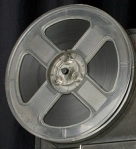
REWIND!…If you liked this post, you may also dig all this good stuff about sound studies pedagogy! Good luck with Fall semester, folks!:
“Heavy Airplay, All Day with No Chorus”: Classroom Sonic Consciousness in the Playlist Project—Todd Craig
SO! Podcast #79: Behind the Podcast: deconstructing scenes from AFRI0550, African American Health Activism – Nic John Ramos and Laura Garbes
The Sounds of Anti-Anti-Essentialism: Listening to Black Consciousness in the Classroom- Carter Mathes
Making His Story Their Story: Teaching Hamilton at a Minority-serving Institution–Erika Gisela Abad
Teaching Soundwalks in a Course on Gentrification, Black Music, and Corporate America–Rami Toubia Stucky
Deejaying her Listening: Learning through Life Stories of Human Rights Violations– Emmanuelle Sonntag and Bronwen Low
Audio Culture Studies: Scaffolding a Sequence of Assignments– Jentery Sayers
Deep Listening as Philogynoir: Playlists, Black Girl Idiom, and Love–Shakira Holt
“Toward A Civically Engaged Sound Studies, or ReSounding Binghamton”–Jennifer Lynn Stoever
Listening to #Occupy in the Classroom–D. Travers Scott
SO! Podcast #71: Everyday Sounds of Resilience and Being: Black Joy at School–Walter Gershon
Sounding Out! Podcast #13: Sounding Shakespeare in S(e)oul– Brooke Carlson
A Listening Mind: Sound Learning in a Literature Classroom–Nicole Brittingham Furlonge
My Voice, or On Not Staying Quiet–Kaitlyn Liu
(Re)Locating Soundscapes of Schooling: Learning to Listen to Children’s Lifeworlds–Cassie J. Brownell
If You Can Hear My Voice: A Beginner’s Guide to Teaching–Caroline Pinkston
Mukbang Cooks, Chews, and Heals – David Lee
SO! Podcast #80: Refugee Realities Miniseries–Steph Ceraso
SO! Amplifies: An Interactive Map of Music as Ukrainian Resistance to the 2022 Russian Invasion

https://maphub.net/merje/mm

SO! Amplifies. . .a highly-curated, rolling mini-post series by which we editors hip you to cultural makers and organizations doing work we really really dig. You’re welcome!
—
BONUS POST: Directly following Merje’s introduction to her music mapping project, SO! has also published is her analysis of the observational research she conducted during the first 55 days of the 2022 Russian invasion of Ukraine, drawing from the collection of videographic material from online sources she embedded on this public interactive map. To go directly to that post, click here.
As an Estonian national, I have a regional interest in the relationship between music and cultural identity in Eastern Europe. Popular music has been foundational in building and sustaining Estonian national identity, through the Song Festival tradition which started in 1869, and the Singing Revolution at the end of the 1980s. In the Baltic states, Poland and Ukraine, there are similarities in how music has facilitated resistance to an oppressive regime or invasion.
While other cultural forms can articulate and show off shared values, only music can offer the immediate experience of collective identity (Frith 2007, 264). Looking into the sensitive representation of music in conflict, therefore, is about exercising hapticity with the precarity and suffering in the videos, and ultimately a work of not only academic, but affective labour.
The map format helps visualise the video evidence as it continues to appear in different parts of Ukraine. For accurate analysis, understanding the context, region, and the phase of war in which a musical event originates, is vital. In different parts of the country on the same date, one city can embody a collective feeling of resistance, while the other grief. The map is useful in analysing regional differences in the types of songs performed, and in ‘placing’ the international cases of solidarity. I decided to map the solidarity mixes that directly engage with the musical footage from Ukraine, and to exclude the high number of global fundraising concerts. All map entries depict in some way the role of music in Ukrainian resistance.
The map function is made redundant in posts where the location should not be disclosed for safety reasons, such as this video of soldier Yuriy Gorodetsky performing ‘How Can’t I Love You, My Kyiv’ in a military camp. Additionally, I decided not to embed posts that could inform the Russian military of civilian and humanitarian targets, for example a video from Lviv showing the Philharmonic concert space being used for humanitarian storage.
The focus has been on mapping songs and music, rather than the wider soundscape of war, although sounds such as air raid sirens do appear in some videos. The map includes sections on recorded music, such as this wartime ska track by Mandry, field recordings, and ways in which music has been used in online warfare. Most map entries fall under the civilian resistance category, exploring the following questions:
- What kind of music appears in this resistance? In terms of genre, is it folk, rock, hip hop, or national patriotic song? Is it Ukrainian or ‘Western’? How do the different examples embody national feeling and safeguarding of a culture?
- What is the power of these musical moments, for the artists, for Ukrainians, and for the world? What can music achieve in a conflict environment, and how does it evoke moments of solidarity?
- How does the music reflect the different phases and emotions of the war, from mobilisation, resistance, support, contemplation, to grief?
Similar research questions have been posed by Arve Hansen et al. in A War of Songs (2019) about the 2013-14 Euromaidan protests, in which music carried much of the revolutionary feeling. Adriana Helbig wrote about the Orange Revolution of 2004-05 in Hip Hop Ukraine: Music, Race, and African Migration when the Internet played a huge role in circulating political messages through music, especially as Ukraine’s media was controlled by president Yanukovich (2014). Maria Sonevytsky’s Wild Music (2019) looks at both revolutions and the vernacular Ukrainian discourses of ‘wildness’ as they manifested in popular music during this politically volatile decade.
When looking at Ukraine, we are studying a repeatedly colonised region, where, as part of the former Russian Empire, serfdom was abolished in 1861. Ethnographic research and promotion of a national culture in the decades that followed led to a brief window of independence for Ukraine in 1917, only to be occupied and incorporated into the Soviet Union as the Ukrainian Soviet Socialist Republic in the same year. Unlike Poland and the Baltic states, Ukraine was not independent between the two world wars, which adds depth to Soviet propaganda that permeated the region throughout the 20th century – important context to consider when analysing its struggle for autonomy.

Drawing from Parkes, the relationships of domination and subordination are particularly marked and articulated through music in colonised groups (Parkes 1994). Often, Ukraine is portrayed as a country of two opposing regions: the pro-European West and the pro-Russian East. While there have been two sides opposed to each other since the 2014 Crimean occupation, the linguistic, ethnic, historical and religious divisions in Ukraine cannot neatly fit into this East-West dichotomy. In addition to complicated ethnic boundaries that define and maintain the region’s cultural identities, Ukraine is dealing with a post-colonial struggle to protect its independence from imperialist Russia.
The ‘places’ constructed through Ukrainian music embody these complex issues, notions of difference and social boundaries – the very reason why music is socially meaningful: it provides means by which people recognise identities, places and the boundaries which separate them (Stokes 1994). In a war situation, beyond political and social alliances, we are also looking at music as survival (Stokes 2020).
—
Merje Laiapea is a curator, artistic programmer and writer working across sound, music and film. She is completing her Master’s in Global Creative and Cultural Industries in the Music Department at SOAS, University of London. Within the broad realm of music and cultural identity, her research interests include the expressive power of the sound-image relationship, forms of frequency, and multimodal approaches to research itself. She assists with event production and community engagement at SOAS Concert Series and works as Submissions Advisor for the 2022 Film Africa festival. Merje also broadcasts the occasional radio show and DJ mix. To find out more about Merje’s motivation behind the project, click here to read an interview by the University of London.
—

REWIND!…If you liked this post, you may also dig this:
Mapping the Music in Ukraine’s Resistance to the 2022 Russian Invasion–Merje Laiapea
SO! Amplifies: Wu Tsang’s Anthem (2021)—Freddie Cruz Nowell
SO! Amplifies: Marginalized Sound—Radio for All–J. Diaz
SO! Amplifies: Die Jim Crow Record Label
SO! Amplifies: Cities and Memory–Stuart Fowkes






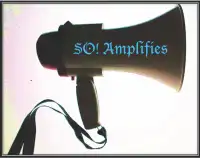
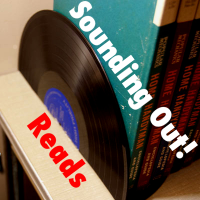





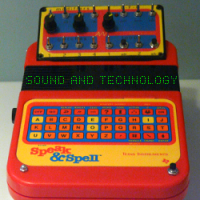


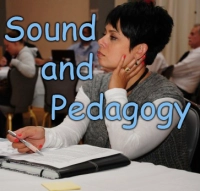

Recent Comments